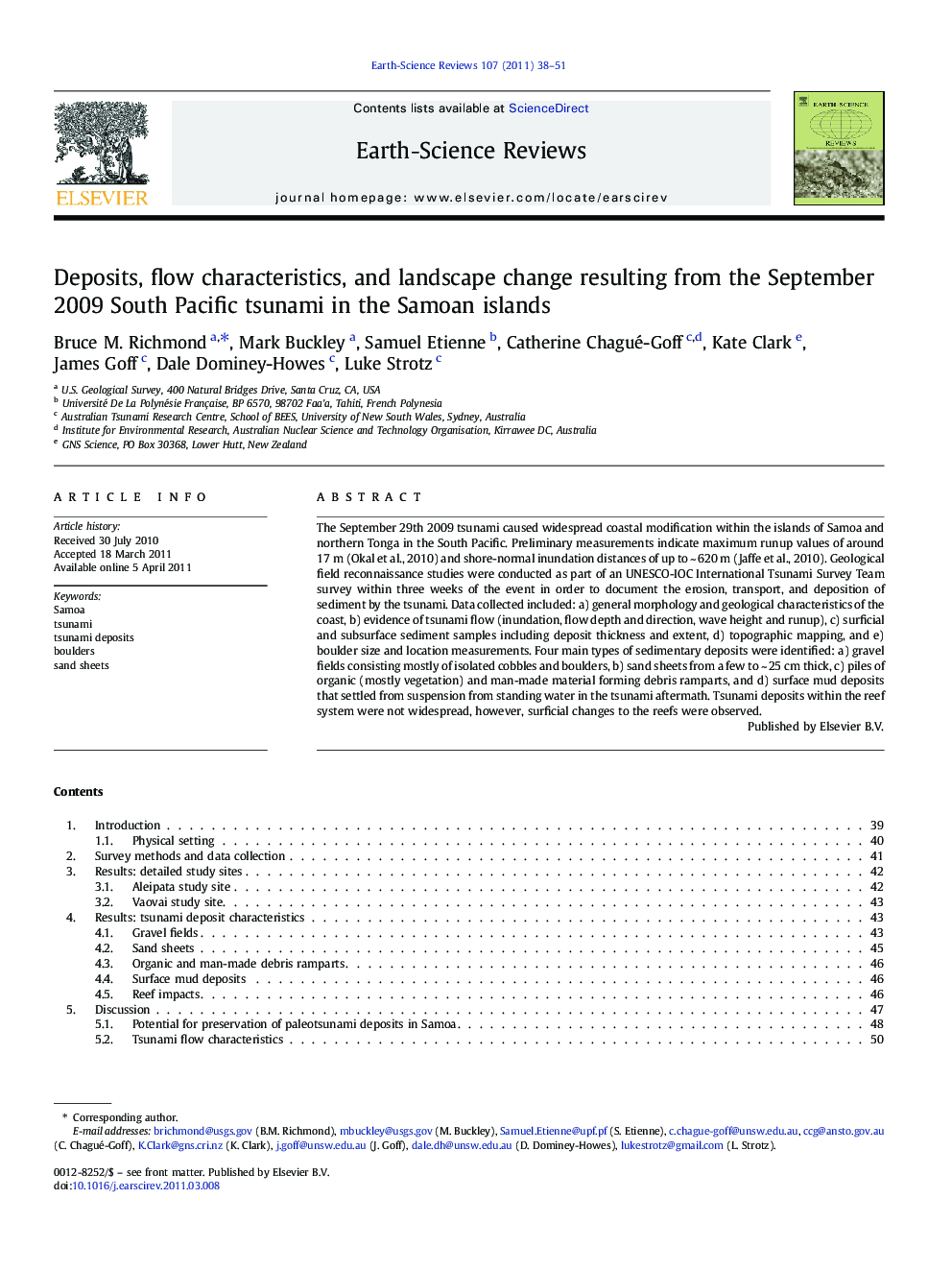| Article ID | Journal | Published Year | Pages | File Type |
|---|---|---|---|---|
| 6443189 | Earth-Science Reviews | 2011 | 14 Pages |
Abstract
The September 29th 2009 tsunami caused widespread coastal modification within the islands of Samoa and northern Tonga in the South Pacific. Preliminary measurements indicate maximum runup values of around 17Â m (Okal et al., 2010) and shore-normal inundation distances of up to ~Â 620Â m (Jaffe et al., 2010). Geological field reconnaissance studies were conducted as part of an UNESCO-IOC International Tsunami Survey Team survey within three weeks of the event in order to document the erosion, transport, and deposition of sediment by the tsunami. Data collected included: a) general morphology and geological characteristics of the coast, b) evidence of tsunami flow (inundation, flow depth and direction, wave height and runup), c) surficial and subsurface sediment samples including deposit thickness and extent, d) topographic mapping, and e) boulder size and location measurements. Four main types of sedimentary deposits were identified: a) gravel fields consisting mostly of isolated cobbles and boulders, b) sand sheets from a few to ~Â 25Â cm thick, c) piles of organic (mostly vegetation) and man-made material forming debris ramparts, and d) surface mud deposits that settled from suspension from standing water in the tsunami aftermath. Tsunami deposits within the reef system were not widespread, however, surficial changes to the reefs were observed.
Related Topics
Physical Sciences and Engineering
Earth and Planetary Sciences
Geology
Authors
Bruce M. Richmond, Mark Buckley, Samuel Etienne, Catherine Chagué-Goff, Kate Clark, James Goff, Dale Dominey-Howes, Luke Strotz,
